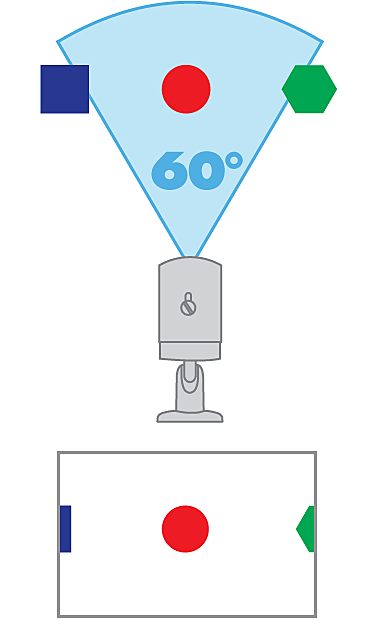Cameras: Understanding Field of View (FOV) and lenses
The field of view of a security camera, also called the viewing angle, is the area that the camera can see. On a specification sheet, you will see the field of view measured in degrees. Click here for downloads and documentation for your product. The focal length of the lens affects the field of view. A shorter focal length lens captures more of the scene and therefore displays a larger field of view. Conversely, a longer lens magnifies the scene more, thereby decreasing the field of view. Think of the field of view as the angle between the two horizontal edges of the camera image.
Wide Angle Lenses
-
Wide Angle lenses or smaller lenses produce a greater field of view than cameras with a larger lens. They capture a large area, though objects will appear smaller within the camera image.
-
Wide Angle lenses are designed for monitoring large areas, such as foyers, parking lots, or warehouses.
-
The camera with 90° field of view is wider and captures more objects in a scene, though each object takes up a small part of the camera image.

Narrow Angle Lenses
-
Narrow Angle lenses or larger lenses produce smaller field of view. They capture a limited area, but objects will appear larger and more detailed within the camera image.
-
Narrow Angle lenses are designed for monitoring a specific target, such as cash registers, doorways and entrances, hallways, or objects of value.
-
The camera with 60° field of view is more narrow and captures some objects in a scene, but in greater detail.

Lens Size and Field of View
- The size of the camera lens, or focal length, is the main factor that determines the field of view. The higher the focal length value, the lower the field of view.
Camera Lens Types
- A Fixed Lens is one where the cameras focal length is permanently set and cannot be adjusted by the user. This means that the field of view is permanently set, so it is important to select the correct field of view (i.e., wide- or narrow-angle) for your application.
- A Varifocal Lens allows the user to manually adjust the camera lens, generally using adjustment screws or knobs. Varifocal cameras are typically more expensive than the equivalent fixed lens model, but they allow for greater flexibility to optimize the camera picture for your specific needs. The focus settings on a camera with a varifocal lens may need to be adjusted from time to time.